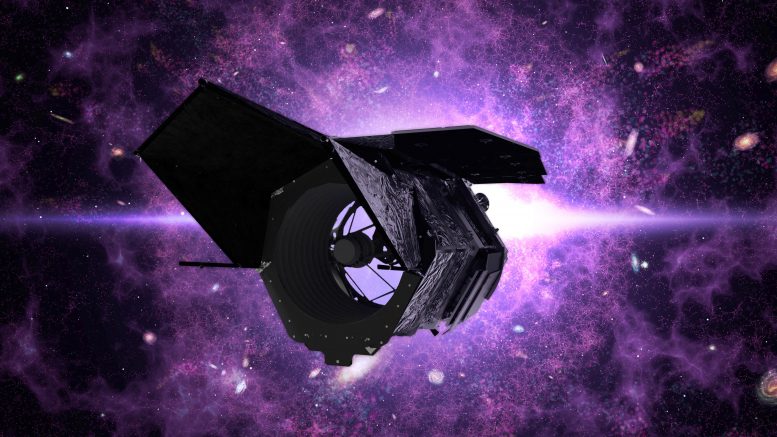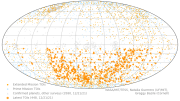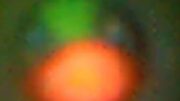NASA’s Nancy Grace Roman Space Telescope will be able to explore even more cosmic questions, thanks to a new near-infrared filter. The upgrade will allow the observatory to see longer wavelengths of light, opening up exciting new opportunities for discoveries from the edge of our solar system to the farthest reaches of space.
“It’s incredible that we can make such an impactful change to the mission after all of the primary components have already passed their critical design reviews,” said Julie McEnery, the Roman Space Telescope senior project scientist at NASA’s Goddard Space Flight Center in Greenbelt, Maryland. “Using the new filter, we will be able to see the full infrared range the telescope is capable of viewing, so we’re maximizing the science Roman can do.”
With the new filter, Roman’s wavelength coverage of visible and infrared light will span 0.5 to 2.3 microns – a 20% increase over the mission’s original design. This range will also enable more collaboration with NASA’s other big observatories, each of which has its own way of viewing the cosmos. The Hubble Space Telescope can see from 0.2 to 1.7 microns, which allows it to observe the universe in ultraviolet to near-infrared light. The James Webb Space Telescope, launching in October, will see from 0.6 to 28 microns, enabling it to see near-infrared, mid-infrared, and a small amount of visible light. Roman’s improved range of wavelengths, along with its much larger field of view, will reveal more interesting targets for Hubble and Webb to follow up on for detailed observations.
Watch this video to learn more about the Nancy Grace Roman Space Telescope’s new near-infrared filter and the benefits it will provide. Credit: NASA’s Goddard Space Flight Center
Expanding Roman’s capabilities to include much of the near-infrared K band, which extends from 2.0 to 2.4 microns, will help us peer farther across space, probe deeper into dusty regions, and view more types of objects. Roman’s sweeping cosmic surveys will unveil countless celestial bodies and phenomena that would otherwise be difficult or impossible to find.
“A seemingly small change in wavelength range has an enormous effect,” said George Helou, director of IPAC at Caltech in Pasadena, California, and one of the advocates for the modification. “Roman will see things that are 100 times fainter than the best ground-based K-band surveys can see because of the advantages of space for infrared astronomy. It’s impossible to foretell all of the mysteries Roman will help solve using this filter.”
Treasures in our cosmic backyard
While the mission is optimized to explore dark energy and exoplanets – planets beyond our solar system – its enormous field of view will capture troves of other cosmic wonders too.
Roman will excel at detecting the myriad of small, dark bodies located in the outskirts of our solar system, beyond Neptune’s orbit. Using its improved vision, the mission will now be able to search these bodies for water ice.
This region, known as the Kuiper belt, contains the remnants of a primordial disk of icy bodies that were left over from the formation of the solar system. Many of these cosmic fossils are largely unchanged since they formed billions of years ago. Studying them provides a window into the solar system’s early days.
Most of the Kuiper belt’s original inhabitants are no longer there. Many were thrown out into interstellar space as the solar system took shape. Others were eventually sent toward the inner solar system, becoming comets. Occasionally their new paths crossed Earth’s orbit.
Scientists think ancient comet impacts delivered at least some of Earth’s water, but they’re not sure how much. A census of the water ice on bodies in the outer solar system could offer valuable clues.
Lifting veils of dust
Though it’s a bit counterintuitive, our Milky Way galaxy can be one of the most difficult galaxies to study. When we peer through the plane of the Milky Way, many objects are shrouded from view by clouds of dust and gas that drift in between stars.
Dust scatters and absorbs visible light because the particles are the same size or even larger than the light’s wavelength. Since infrared light travels in longer waves, it can pass more easily through clouds of dust.
Viewing space in infrared light allows astronomers to pierce hazy regions, revealing things they wouldn’t be able to see otherwise. With Roman’s new filter, the observatory will now be able to peer through dust clouds up to three times thicker than it could as originally designed, which will help us study the structure of the Milky Way.
The mission will spot stars that lie in and beyond our galaxy’s central hub, which is densely packed with stars and debris. By estimating how far away the stars are, scientists will be able to piece together a better picture of our home galaxy.
Roman’s expanded view will also help us learn even more about brown dwarfs – objects that are not massive enough to undergo nuclear fusion in their cores like stars. The mission will find these “failed stars” near the heart of the galaxy, where catastrophic events like supernovae occur more often.
Astronomers think this location may affect how stars and planets form since exploding stars seed their surroundings with new elements when they die. Using the new filter, the mission will be able to characterize brown dwarfs by probing their composition. This could help us identify differences between objects near the heart of the galaxy and out in the spiral arms.
Gazing across the expanse of space
If we want to view the most far-flung objects in space, we need an infrared telescope. As light travels through the expanding universe, it stretches into longer wavelengths. The longer it travels before reaching us, the more extended its wavelengths become. UV light stretches to visible light wavelengths, and then visible light extends to infrared.
By extending Roman’s view even further into the infrared, the mission will be able to see back to when the universe was less than 300 million years old, or about 2% of its current age of 13.8 billion years. Exploring such distant regions of space could help us understand when stars and galaxies first began forming.
The origin of galaxies is still a mystery because the first objects that formed are extremely faint and spread sparsely across the sky. Roman’s new filter, coupled with the telescope’s wide field of view and its sensitive camera, could help us find enough first-generation galaxies to understand the population as a whole. Then astronomers can select prime targets for missions like the James Webb Space Telescope to zoom in for more detailed follow-up observations.
The new filter could also provide another way to pin down the Hubble constant, a number that describes how fast the universe is expanding. It has recently sparked debate among astronomers because different results have emerged from different measurements.
Astronomers often use a certain type of star called Cepheid variables to help determine the expansion rate. These stars brighten and dim periodically, and in the early 1900s American astronomer, Henrietta Leavitt noticed a relationship between a Cepheid’s luminosity – that is, its average intrinsic brightness – and the cycle’s length.
When astronomers detect Cepheids in remote galaxies, they can determine accurate distances by comparing the actual, intrinsic brightness of the stars to their apparent brightness from Earth. Then astronomers can measure how fast the universe is expanding by seeing how fast galaxies at different distances are moving away.
Another type of star, called RR Lyrae variables, has a similar relationship between their actual brightness and the amount of time it takes to brighten, dim, and brighten again. They’re fainter than Cepheids, and their period-luminosity relationship can’t easily be determined in most wavelengths of light, but Roman will be able to study them using its new filter. Observing RR Lyrae and Cepheid stars in infrared light to determine distances to other galaxies may help clear up recently revealed discrepancies in our measurements of the universe’s expansion rate.
“Enhancing Roman’s vision further into the infrared provides astronomers with a powerful new tool to explore our universe,” said McEnery. “Using the new filter we will make discoveries over a vast area, from distant galaxies all the way to our local neighborhood.”
The Nancy Grace Roman Space Telescope is managed at NASA’s Goddard Space Flight Center in Greenbelt, Maryland, with participation by NASA’s Jet Propulsion Laboratory and Caltech/IPAC in Southern California, the Space Telescope Science Institute in Baltimore, and a science team comprising scientists from various research institutions. The primary industrial partners are Ball Aerospace and Technologies Corporation in Boulder, Colorado, L3Harris Technologies in Melbourne, Florida, and Teledyne Scientific & Imaging in Thousand Oaks, California.










Be the first to comment on "Incredible New “Cosmic Eyewear” to Deepen the View of NASA’s Roman Space Telescope"